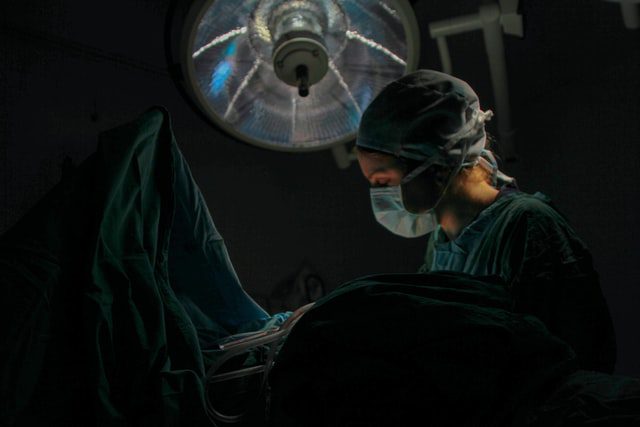
Top Surgery Myths
When it comes to navigating gender-affirming treatments and surgery, a lot of questions come to mind and the answers are often few and far between. The space this has created for myths, coupled with changing legislature and laws that are not universal in the world, may leave one wondering what is true and what is not. Whether you are someone experiencing gender dysphoria, or just curious about gender identity and affirming surgeries thereof -below is a case of myth-busting that should put to rest any questions you may have.
What is Top Surgery?
Top surgery is a medical procedure to remove the chest tissue (subcutaneous mastectomy) from someone’s body. This surgery is typically done for transgender men and nonbinary people. Depending on chest size, the surgery can be minor or a significant medical procedure.
For someone with a smaller chest area, there are fewer lacerations made on the skin because there is less excess skin, focusing mainly on the nipple and areola area (nipple-sparing subcutaneous mastectomy).
People with larger chests may need more major surgery, often needing to have their nipples and areolas removed, adjusted in size, and put back into place.
For many people, top surgery is life-changing, many transgender men are affirmed in their gender identity after the procedure. The same can be said for non-binary people as top surgery can go a long way in treating well-documented gender dysphoria.
Top Surgery Myths
“You Will Regret Getting Top Surgery”
Oftentimes people think that top surgery is something that people are likely to regret. Perhaps it is the perceived permeance of it or the technicality of the procedure. Regret, however, is very rare. For many people, gender identity is something they grapple with much of their lives, top surgery is also a very expensive procedure to have. Often times the surgical outcome is something that the patient has not only dreamt of for years but saved up for a similar amount of time.
It is important to remember that most people who undergo top surgery experience gender dysphoria and a procedure like this serves to affirm how they already see themselves. Trans patients, for example, are reported to almost never feel regret after top surgery, rather the kinds of regret experienced have more to do with the medical intricacies.
Using a board-certified plastic surgeon is critical to avoid complications. It is important that patients are confident in the skills of medical professionals. Regret for any other reason is rare, in fact, top surgery is known to improve the body image, mental health, and quality of life of those who undergo it.

“You Cannot Get Top Surgery Without Being on Testosterone”
Gender-diverse people and gender-nonconforming people also receive top surgery. This myth implies that only trans men receive top surgery, which is incorrect. One does not need to be on hormone therapy to have top surgery.
There are plenty of practices throughout the US for instance, that perform top surgery without a testosterone prerequisite. Surgeons all over the world are realizing the importance of a gender-inclusive practice as a good source of social support.
Hormone therapy is not needed in order to have top surgery.
Where does the hormone therapy myth come from?
Knowledge:
Information and knowledge on gender identity have a great deal of research that goes into it, over time, research has revealed new phenomena and been adjusted to be as inclusive as possible. For instance, the Standards of Care (SOC) as per the World Professional Association of Transgender Health (WPATH) once stipulated that one has to be of specific gender identity or prior to top surgery approval. This has since changed.
The Growth of Breast Tissue
Because top surgery essentially reduces breast size, many believe that the lack of hormone therapy will impact breast tissue such that it grows back. This however is impossible because larger breasts require a larger skin area, so even if one has good skin elasticity, top surgery removes 93-95% of breast tissue, removing the possibility of regrowth.
Insurance Concerns
The structure of insurance coverage for top surgery may vary depending on who your healthcare provider is. The possibility of being denied coverage for top surgery is something that many transgender people grapple with, this can cause stress for a lot of people and even raise mental health concerns. Being denied insurance coverage is more likely because of age than one’s gender identity. Depending on age, one’s medical transition can be carry risks that may be fatal or affect the patient for long periods of time. Other complications are present that only make such a procedure more dangerous for older individuals.
“You need a therapy letter before Top Surgery”
Depending on the surgeon, the only thing you may need is informed consent. Many top surgery doctors use an informed consent model to make sure that the surgical goals of the patient are driven by a fully informed decision.
What is Informed Consent?
This concept is quite self-explanatory, it means that the surgeon and patient have had a discussion that confirms the patient’s full awareness and education on the surgical transition they are pursuing.
In this case, a letter proving therapy is not needed. The World Professional Association of Transgender Health also does not stipulate the need for a therapist letter. However, some surgeons’ insurance companies may request a therapy letter even if you have given prior written permission.
“Top Surgery has weight requirements”
This depends on the surgeon. The surgical options available to patients are dictated by requirements often deemed by the surgeon. Many patients encounter surgeons who use a body mass index (BMI) to approve the surgery, while some do not.
“Breast cancer risks are reduced after top surgery”
There is a myth that top surgery and other forms of chest reconstruction treatment can eliminate the potential for breast cancer. It is true that the removal of breast tissue during top surgery also reduces the risks of breast cancer. There is nonetheless still a possibility is as a result of the remaining 4-8% breast tissue.



